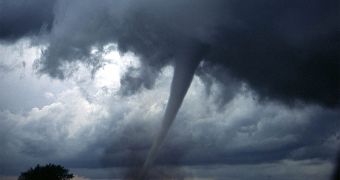Governments and organizations have a new reason to support strict standards seeking to curb greenhouse gas emissions generated by polluting cars.
A recent study published in the Journal of Geophysical Research – Atmospheres indicates that there is a strong connection between tornadoes and hailstorms and the toxic car exhaust fumes lowering air quality especially in populous urban areas.
After analyzing data provided by the Environmental Protection Agency (EPA), experts have realized that, just like us, tornados and hailstorms take a break on weekends, National Geographic informs.
According to their research, harmful pollutants create and maintain all the conditions favoring extreme weather events, since they increase the air temperature.
It seems that all the cars rolling on the city streets as people rush to go to work emit a large amount of GHGs. Their contribution is quite significant, since the report reveals that extreme weather events are more likely to take place during the five working days, rather than in weekends.
After analyzing summer storm patterns, affecting the US from 1995 to 2009, experts have reached the conclusion that the number of hailstorms recorded exceeds the average by 20% during the week.
On the other hand, the rate of the same phenomena is up to 20% below average during non-working days.
Moreover, to complete their research, scientists have also studied a graphic illustrating the level of summertime air pollution, provided by the Environmental Protection Agency. The data is supporting their theory, revealing that summertime levels of pollution peak midweek.
“The weekly cycle in summertime storm activity for 1995–2009 was found to be statistically significant and unlikely to be due to natural variability.[...] The pattern of variability supports the hypothesis that air pollution aerosols invigorate deep convective clouds in a moist, unstable atmosphere, to the extent of inducing production of large hailstones and tornados,” reveal the authors of this study.
The main conclusion is that human-made pollution generated during the five working days, when people use their vehicles to go back and forth, is favoring a series of devastating natural phenomena, like hailstorms and tornadoes.

 14 DAY TRIAL //
14 DAY TRIAL //